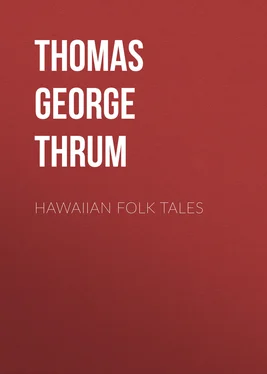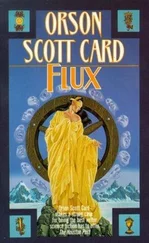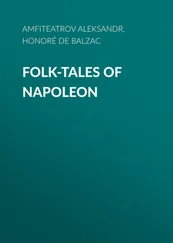Thomas George Thrum - Hawaiian Folk Tales
Здесь есть возможность читать онлайн «Thomas George Thrum - Hawaiian Folk Tales» — ознакомительный отрывок электронной книги совершенно бесплатно, а после прочтения отрывка купить полную версию. В некоторых случаях можно слушать аудио, скачать через торрент в формате fb2 и присутствует краткое содержание. Жанр: Старинная литература, foreign_antique, Сказка, на английском языке. Описание произведения, (предисловие) а так же отзывы посетителей доступны на портале библиотеки ЛибКат.
- Название:Hawaiian Folk Tales
- Автор:
- Жанр:
- Год:неизвестен
- ISBN:нет данных
- Рейтинг книги:4 / 5. Голосов: 1
-
Избранное:Добавить в избранное
- Отзывы:
-
Ваша оценка:
- 80
- 1
- 2
- 3
- 4
- 5
Hawaiian Folk Tales: краткое содержание, описание и аннотация
Предлагаем к чтению аннотацию, описание, краткое содержание или предисловие (зависит от того, что написал сам автор книги «Hawaiian Folk Tales»). Если вы не нашли необходимую информацию о книге — напишите в комментариях, мы постараемся отыскать её.
Hawaiian Folk Tales — читать онлайн ознакомительный отрывок
Ниже представлен текст книги, разбитый по страницам. Система сохранения места последней прочитанной страницы, позволяет с удобством читать онлайн бесплатно книгу «Hawaiian Folk Tales», без необходимости каждый раз заново искать на чём Вы остановились. Поставьте закладку, и сможете в любой момент перейти на страницу, на которой закончили чтение.
Интервал:
Закладка:
Judge Fornander alludes to this legend, giving the name, however, Aukelenui-a-Iku, and adding to it the account of the hero’s journey to the place where the water of life was kept (ka-wai-ola-loa-a-Kane), his obtaining it and therewith resuscitating his brothers, who had been killed by drowning some years before. Another striking similarity is that furnished to Judge Fornander in the legend of Ke-alii-waha-nui: “He was king of the country called Honua-i-lalo. He oppressed the Menehune people. Their god Kane sent Kane-apua and Kaneloa, his elder brother, to bring the people away, and take them to the land which Kane had given them, and which was called Ka aina momona a Kane, or Ka one lauena a Kane, and also Ka aina i ka haupo a Kane. The people were then told to observe the four Ku days in the beginning of the month as Kapu-hoano (sacred or holy days), in remembrance of this event, because they thus arose (Ku) to depart from that land. Their offerings on the occasion were swine and goats.” The narrator of the legend explains that formerly there were goats without horns, called malailua, on the slopes of Mauna Loa on Hawaii, and that they were found there up to the time of Kamehameha I. The legend further relates that after leaving the land of Honualalo, the people came to the Kai-ula-a-Kane (the Red Sea of Kane); that they were pursued by Ke-alii-waha-nui; that Kane-apua and Kanaloa prayed to Lono, and finally reached the Aina lauena a Kane.
“In the famous Hawaiian legend of Hiiaka-i-ka-poli-o-Pele, it is said that when Hiiaka went to the island of Kauai to recover and restore to life the body of Lohiau, the lover of her sister, Pele, she arrived at the foot of the Kalalau Mountain shortly before sunset. Being told by her friends at Haena that there would not be daylight sufficient to climb the pali (precipice) and get the body out of the cave in which it was hidden, she prayed to her gods to keep the sun stationary (i ka muli o Hea) over the brook Hea, until she had accomplished her object. The prayer was heard, the mountain was climbed, the guardians of the cave vanquished, and the body recovered.”
A story of retarding the sun and making the day longer to accomplish his purpose is told of Maui-a-kalana, according to Dibble’s history.
Judge Fornander alludes to one other legend with incidents similar to the Old Testament history wherein “Na-ula-a-Mainea, an Oahu prophet, left Oahu for Kauai, was upset in his canoe, was swallowed by a whale, and thrown up alive on the beach at Wailua, Kauai.”
Judge Fornander says that, when he first heard the legend of the two brother prophets delivering the Menehune people, “he was inclined to doubt its genuineness and to consider it as a paraphrase or adaptation of the Biblical account by some semi-civilized or semi-Christianized Hawaiian, after the discovery of the group by Captain Cook. But a larger and better acquaintance with Hawaiian folk-lore has shown that though the details of the legend, as interpreted by the Christian Hawaiian from whom it was received, may possibly in some degree, and unconsciously to him, perhaps, have received a Biblical coloring, yet the main facts of the legend, with the identical names of persons and places, are referred to more or less distinctly in other legends of undoubted antiquity.” And the Rev. Mr. Dibble, in his history, says of these Hawaiian legends, that “they were told to the missionaries before the Bible was translated into the Hawaiian tongue, and before the people knew much of sacred history. The native who acted as assistant in translating the history of Joseph was forcibly struck with its similarity to their ancient tradition. Neither is there the least room for supposing that the songs referred to are recent inventions. They can all be traced back for generations, and are known by various persons residing on different islands who have had no communication with each other. Some of them have their date in the reign of some ancient king, and others have existed time out of mind. It may also be added, that both their narrations and songs are known the best by the very oldest of the people, and those who never learned to read; whose education and training were under the ancient system of heathenism.”
“Two hypotheses,” says Judge Fornander, “may with some plausibility be suggested to account for this remarkable resemblance of folk-lore. One is, that during the time of the Spanish galleon trade, in the sixteenth and seventeenth centuries, between the Spanish Main and Manila, some shipwrecked people, Spaniards and Portuguese, had obtained sufficient influence to introduce these scraps of Bible history into the legendary lore of this people.... On this fact hypothesis I remark that, if the shipwrecked foreigners were educated men, or only possessed of such Scriptural knowledge as was then imparted to the commonality of laymen, it is morally impossible to conceive that a Spaniard of the sixteenth century should confine his instruction to some of the leading events of the Old Testament, and be totally silent upon the Christian dispensation, and the cruciolatry, mariolatry, and hagiolatry of that day. And it is equally impossible to conceive that the Hawaiian listeners, chiefs, priests, or commoners, should have retained and incorporated so much of the former in their own folk-lore, and yet have utterly forgotten every item bearing upon the latter.
“The other hypothesis is, that at some remote period either a body of the scattered Israelites had arrived at these islands direct, or in Malaysia, before the exodus of ‘the Polynesian family,’ and thus imparted a knowledge of their doctrines, of the early life of their ancestors, and of some of their peculiar customs, and that having been absorbed by the people among whom they found a refuge, this is all that remains to attest their presence—intellectual tombstones over a lost and forgotten race, yet sufficient after twenty-six centuries of silence to solve in some measure the ethnic puzzle of the lost tribes of Israel. In regard to this second hypothesis, it is certainly more plausible and cannot be so curtly disposed of as the Spanish theory.... So far from being copied one from the other, they are in fact independent and original versions of a once common legend, or series of legends, held alike by Cushite, Semite, Turanian, and Aryan, up to a certain time, when the divergencies of national life and other causes brought other subjects peculiar to each other prominently in the foreground; and that as these divergencies hardened into system and creed, that grand old heirloom of a common past became overlaid and colored by the peculiar social and religious atmosphere through which it has passed up to the surface of the present time. But besides this general reason for refusing to adopt the Israelitish theory, that the Polynesian legends were introduced by fugitive or emigrant Hebrews from the subverted kingdoms of Israel or Judah, there is the more special reason to be added that the organization and splendor of Solomon’s empire, his temple, and his wisdom became proverbial among the nations of the East subsequent to his time; on all these, the Polynesian legends are absolutely silent.”
In commenting on the legend of Hiiaka-i-ka-poli-o-Pele, Judge Fornander says: “If the Hebrew legend of Joshua or a Cushite version give rise to it, it only brings down the community of legends a little later in time. And so would the legend of Naulu-a-Mahea,… unless the legend of Jonah, with which it corresponds in a measure, as well as the previous legend of Joshua and the sun, were Hebrew anachronisms compiled and adapted in later times from long antecedent materials, of which the Polynesian references are but broken and distorted echoes, bits of legendary mosaics, displaced from their original surroundings and made to fit with later associations.”
In regard to the account of the Creation, he remarks that “the Hebrew legend infers that the god Elohim existed contemporaneously with and apart from the chaos. The Hawaiian legend makes the three great gods, Kane, Ku, and Lono, evolve themselves out of chaos.... The order of creation, according to Hawaiian folk-lore, was that after Heaven and earth had been separated, and the ocean had been stocked with its animals, the stars were created, then the moon, then the sun.” Alluding to the fact that the account in Genesis is truer to nature, Judge Fornander nevertheless propounds the inquiry whether this fact may not “indicate that the Hebrew text is a later emendation of an older but once common tradition”?
Читать дальшеИнтервал:
Закладка:
Похожие книги на «Hawaiian Folk Tales»
Представляем Вашему вниманию похожие книги на «Hawaiian Folk Tales» списком для выбора. Мы отобрали схожую по названию и смыслу литературу в надежде предоставить читателям больше вариантов отыскать новые, интересные, ещё непрочитанные произведения.
Обсуждение, отзывы о книге «Hawaiian Folk Tales» и просто собственные мнения читателей. Оставьте ваши комментарии, напишите, что Вы думаете о произведении, его смысле или главных героях. Укажите что конкретно понравилось, а что нет, и почему Вы так считаете.












